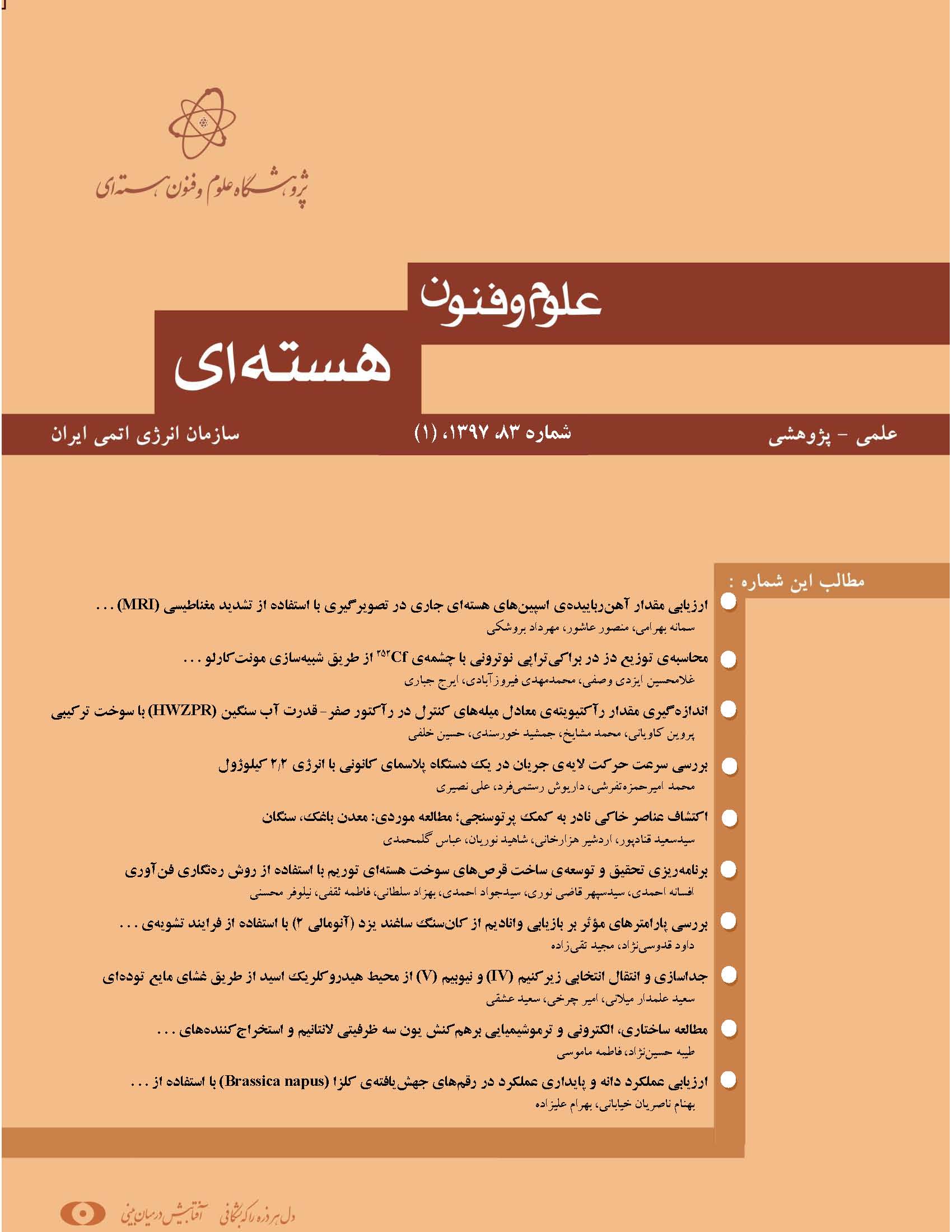نوع مقاله : مقاله پژوهشی
نویسندگان
1 دانشکدهی مهندسی انرژی، دانشگاه صنعتی شریف
2 پژوهشکدهی کاربرد پرتوها، پژوهشگاه علوم و فنون هستهای، سازمان انرژی اتمی ایران
چکیده
توزیع مقدار آهنرباییدهی اسپینهای هستهای جاری در ارزیابی تپهای بسامد رادیویی استفاده شده در آنژیوگرافی با استفاده از تشدید مغناطیسی هسته از اهمیت ویژهای برخوردار است. در این پژوهش توزیع مقدار اسپینهای هستهای جاری در زمان اعمال تپهای انتخابی برشی
مستطیلیشکل و بعد از آن با حل معادلات بلوخ به روش تفاضل محدود، مورد بررسی قرار گرفته است. نتایج حاصل از شبیهسازی اعمال تپ انتخابی مستطیلی شکل 90 درجهای نشان میدهد که با افزایش سرعت جریان، مقادیر آهنرباییده، در اثر حرکت اسپینهای هستهای، تغییر شکل میدهد، و این تغییرات ناشی از چگونگی حرکت اسپینهای جاری است. بیشترین تغییر شکل در مقادیر عرضی یعنی، Mx و Myایجاد میشود. افزایش تندی جریان خون، تقارن در این نمایهها از بین میرود. در مقابل، در مقدار طولی یعنی، Mz تغییر چندانی به جز یک تغییر جهت در راستای سرعت قابل مشاهده نیست. بهطور کلی با روش موجود میتوان توزیع مقادیر آهنرباییده را برای تپهایی با زاویههای تلنگر مختلف و همچنین ترکیب فازهای تپها به دست آورد که نتایج حاصل میتواند در بررسی بهبود مشخصههای تصویری نگاشتهای آنژیوگرافی با تشدید مغناطیسی و بررسی بیشتر تأثیر رشته تپهای طراحی شده بر روی اسیپینهای جاری مورد استفاده قرار گیرد.
کلیدواژهها
عنوان مقاله [English]
Evaluation of the Magnetized Magnitudes of the Flowing Nuclear Spins Using Solving Bloch Equations by Finite Difference Method in MRI
نویسندگان [English]
- S Bahrami 1
- M Boroshaki 1
- M Ashoor 2
1 Department of Energy Engineering, Sharif University
2 Radiation Application Research School, Nuclear Science and Technology Research Institute, AEOI
چکیده [English]
The distribution of the magnetized magnitudes of the flowing nuclear spins has a key role to evaluate the radiofrequency pulses used in the magnetic resonance angiography (MRA). In this study, a finite difference method is used to solve Bloch equations for the flowing nuclear spins during and after a 90° rectangular selective pulse which is important for optimization of the pulse sequence. The results of the simulation indicate that the magnitudes are deformed due to the flowing nuclear spins, while their velocity is increased. The maximum variations are created on the transverse magnitudes namely, Mx and My. The symmetry on these profiles disappear by increasing the velocity. In contrast, no variation on the longitudinal magnitude namely Mz is observed, except a shift on the velocity direction. The sensitivity of these profiles at low velocities for the rectangular selective pulse is more than that of the sinc type, which probably it may be used for characterizing the capillary space. In general, one may obtain the distribution of magnitudes for pulses with various flip angles, as well as, the combination of different pulses. The results may be employed to improve mapping indices in the MRA as well as assessment pulse sequences on the flowing nuclear spins.
کلیدواژهها [English]
- Magnetization
- Bloch equations
- Flowing nuclear spins
- Finite element method
- Magnetic resonance imaging angiography

